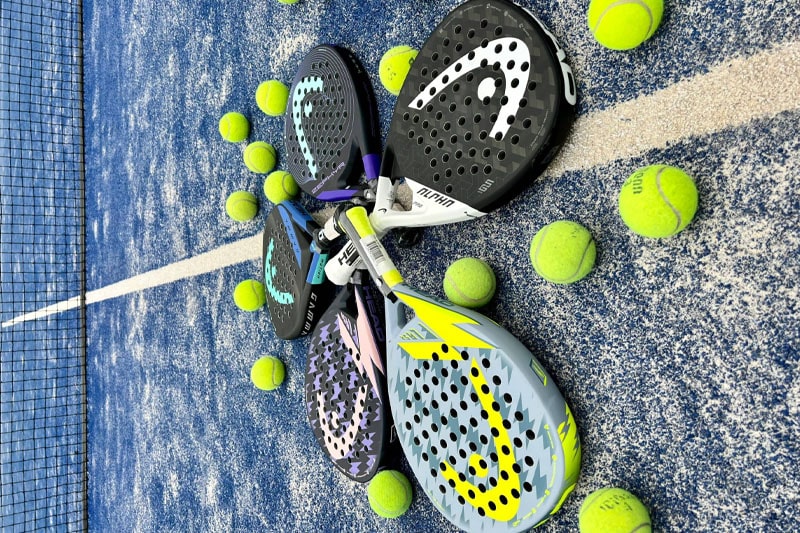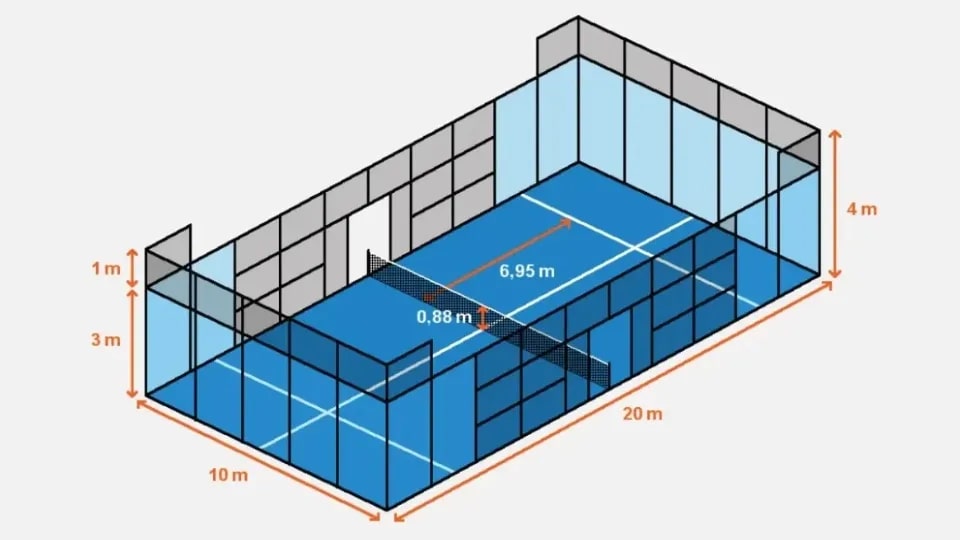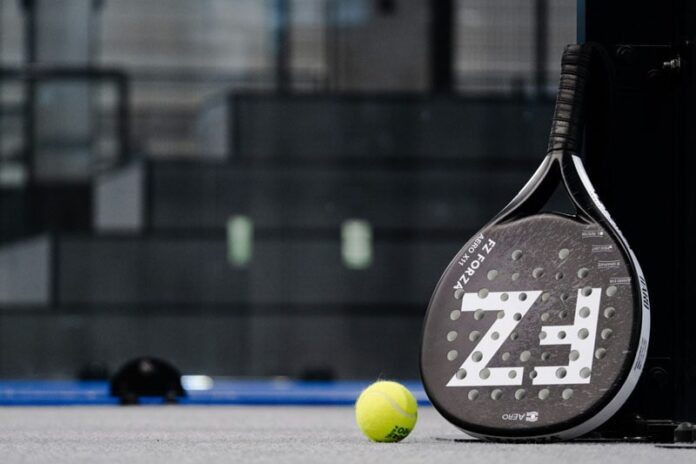Padel is a dynamic and rapidly growing sport that blends elements of tennis and squash. It provides a unique and exhilarating experience for players of all skill levels. Padel originated in Mexico in the 1960s. It is now trendy worldwide, especially in Spain and Argentina. IPF is the governing body for Padel. Understanding Padel Rules is essential for both players and fans.
Padel is played on an enclosed court. It is roughly a third the size of a tennis court. The game emphasizes strategy, teamwork, and quick reflexes. Its glass walls and shorter racquets are distinctive. The underhand serve and the ability to play the ball off the walls make padel accessible to beginners and challenging for pros. Recreational players enjoy padel, while athletes compete in tournaments. Both adhere to the following padel rules.
Equipment
- Padel Racket: Smaller and solid, unlike tennis rackets, has perforated holes instead of strings.
- Padel Ball: It is similar to a tennis ball but is smaller, lighter and has slightly less pressure.
- Attire: Comfortable sportswear and non-marking shoes.

Padel Court Layout
- Dimensions and Layout: The court is 33 ft (10 meters) wide and 66 ft (20 meters) long, with a net dividing the court in half.
- Net Height: 34.6 inches (88 cm) in the center, rising to 36.2 inches (92 cm) at the ends.
- Walls: Integral to the game, made of glass or solid material, allowing the ball to be played off them.
- Markings:
- Service Lines: The court is divided into service boxes by lines parallel to the net. Each service box is 16.5 ft (5 meters) long.
- Center Line: A line divides the service boxes into right and left service areas.
- Baseline: The back line of the court, parallel to the net, marking the end of the playing area.

Basic Padel Rules
- Padel is played as doubles.
- Players start in a designated service box, with partners positioning themselves strategically.
- The initial serve is decided by a toss.
Serving Rules in Padel:
- According to padel rules, the server must stand behind the baseline. They must stand between the center line and the side wall.
- The serve must be underhand. It must be hit below waist height. The server must strike the ball after it bounces behind the service line.
- The ball must land in the diagonal service box on the opponent’s side of the court. After the initial bounce, it can also bounce once on the back or side wall. However, the ball must bounce before returning the serve.
- If the serve hits the fence or wall on the opponent’s side after the initial bounce, it is still in play. The ball must remain within the court’s boundaries for the return to be valid.
- If the serve hits the net but still lands in the correct service box, it is a “let” serve. The server may retake the serve without penalty.
- A fault occurs if the server fails to hit the ball into the correct service box. A fault also occurs if the ball hits the net and does not land in the right area. Two consecutive faults result in the loss of a point.
- The server has two chances to make a valid serve. If the first serve is a fault. The second serve must be tried from the same position without changing stance.
- The receiver must let the ball bounce once before returning it.
- The ball can bounce once on the court and once on the side wall before being returned.
Common Faults:
- Double Fault on Serve: Occurs when a player fails to make a valid serve within two attempts, resulting in a loss of point.
- Hitting the Ball Out of Bounds: If a player hits the ball outside the court boundaries, it results in a fault and loss of point. If the ball hits the glass or the fence first before a bounce then it is considered out of bounds.
- Failure to Return: If a player fails to return the ball before it bounces twice on their side, it results in a loss of the point.
- Interference: If a player interferes with the play, it is considered a fault. It results in the loss of the point.
- Hitting the Net: If a player’s racket or any part of their body touches the net during play, it is considered a fault, and the opposing team wins the point.
Scoring:
- The scoring system follows tennis conventions: 15, 30, 40, and game. A player or team must win four points to win a game, with a two-point lead required to win.
- 15: The first point won in a game.
- 30: The second point won in a game.
- 40: The third point won in a game.
- Game: The fourth point is won, provided there is a two-point lead.
- When both teams reach 40 points, it is called deuce. A team must win two points in a row to win from deuce. The first point is “advantage,” and the next wins.
- The first team to win six games, with a two-game lead, wins the Set. If the score reaches 5-5, a team must win 7-5 to take the set.
- A tiebreaker game is played if the set score reaches 6-6. The team to win seven points, by a margin of two points, wins the tiebreak. The score can end up very high (e.g. 15-13) as the team has to have a minimum of 7 points with 2 point lead.
- Matches are typically played best of three or five sets. The first team to win the majority of the sets wins the match.
Conclusion
Knowing the Padel rules makes the game better. It ensures a fair and fun game for all. This is true whether you’re just starting or looking to refine your skills. With a solid grasp of these rules, you can focus on strategy and teamwork. This will make your time on the court both competitive and fun. Get out there, follow the rules, and enjoy the dynamic sport of padel! Get on the court, follow the rules, and enjoy this exciting sport!







